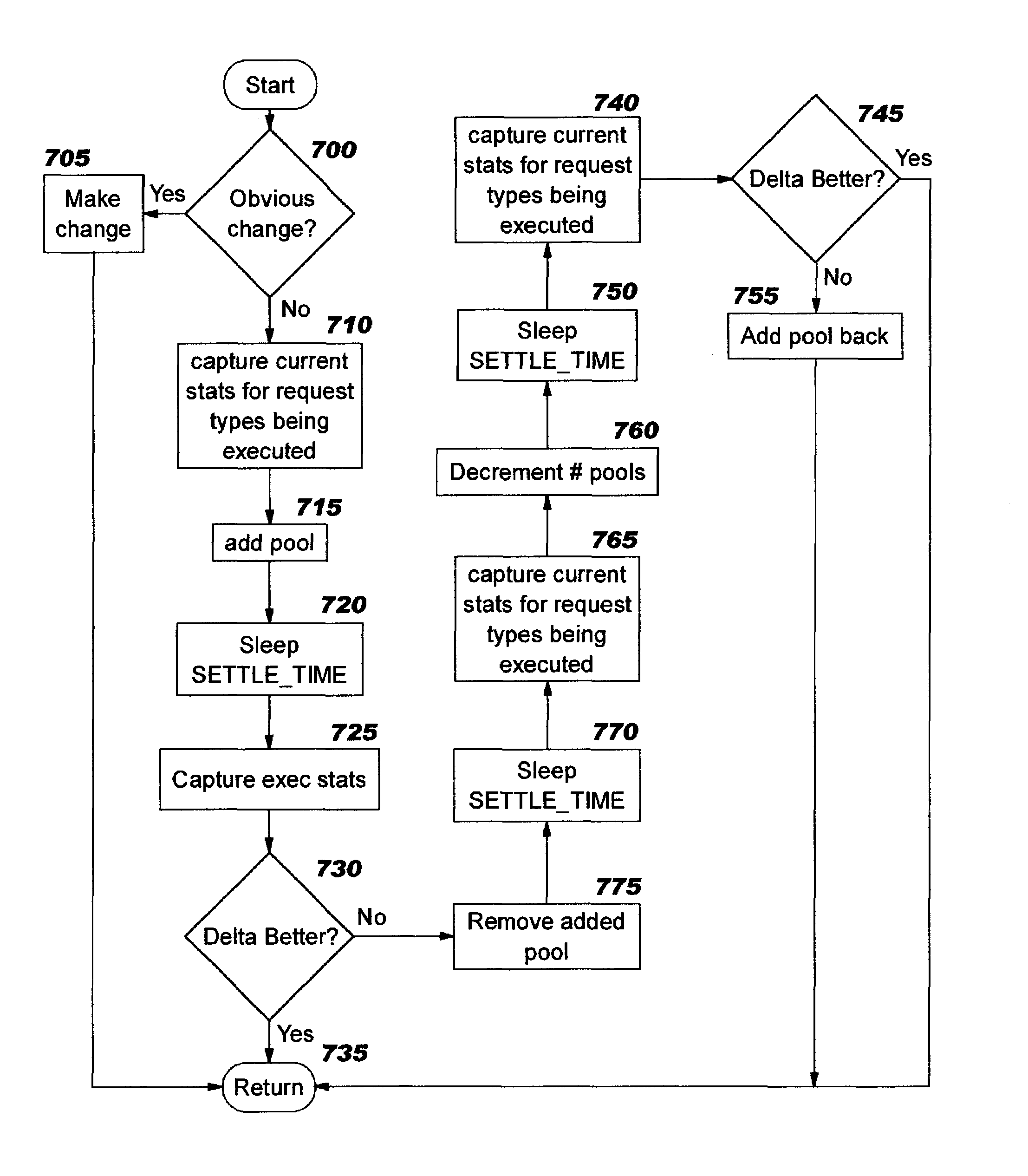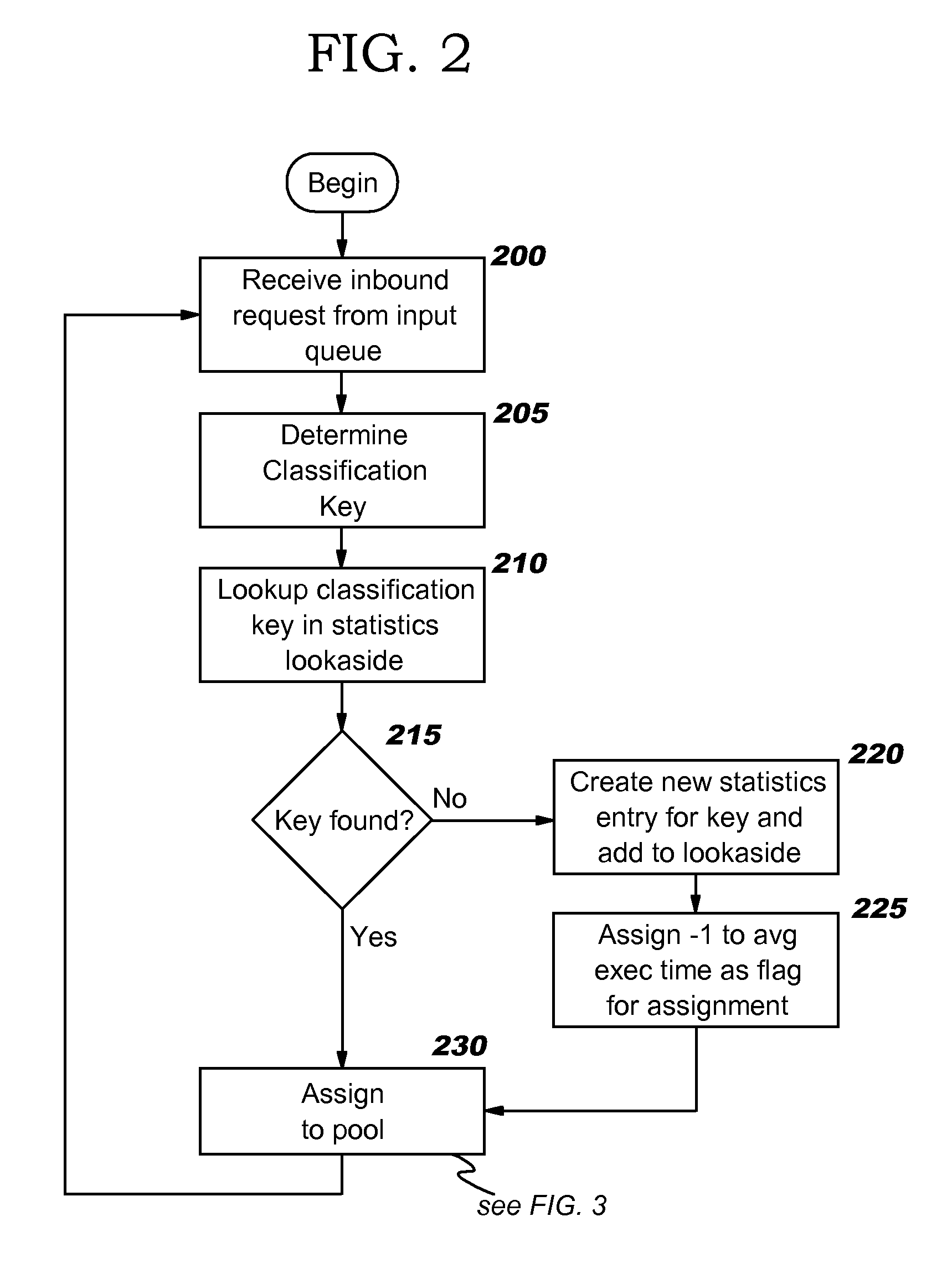Dynamic thread pool tuning techniques
a thread pool and tuning technology, applied in the field of computer software, can solve the problems of unconstrained creation, use, and destruction of threads, and can affect both response time and throughput, and the system overhead for managing threads may be unacceptably high, so as to improve the performance of client/server networks
- Summary
- Abstract
- Description
- Claims
- Application Information
AI Technical Summary
Benefits of technology
Problems solved by technology
Method used
Image
Examples
Embodiment Construction
[0032]The present invention dynamically and programmatically distributes inbound requests across a set of execution resources in a multithreaded server of a client / server networking environment. In preferred embodiments, the execution resources are threads, and these threads are logically organized into a plurality of thread pools. (The set of available threads may be thought of as coming from a single physical pool, which is then subdivided into the logical plurality of pools. See also the discussion of elements 135, 140, 145, and 150 of FIG. 1, below. For ease of reference, the logically-organized pools are referred to herein simply as thread pools, and the single physical pool is referred to as a “global” thread pool.)
[0033]The programmatic request distribution process preferably comprises programmatically determining which inbound requests should be assigned to which pools (and the requests will enter a wait queue for that pool, if necessary), and in optional enhancements, the n...
PUM
 Login to View More
Login to View More Abstract
Description
Claims
Application Information
 Login to View More
Login to View More - R&D
- Intellectual Property
- Life Sciences
- Materials
- Tech Scout
- Unparalleled Data Quality
- Higher Quality Content
- 60% Fewer Hallucinations
Browse by: Latest US Patents, China's latest patents, Technical Efficacy Thesaurus, Application Domain, Technology Topic, Popular Technical Reports.
© 2025 PatSnap. All rights reserved.Legal|Privacy policy|Modern Slavery Act Transparency Statement|Sitemap|About US| Contact US: help@patsnap.com



